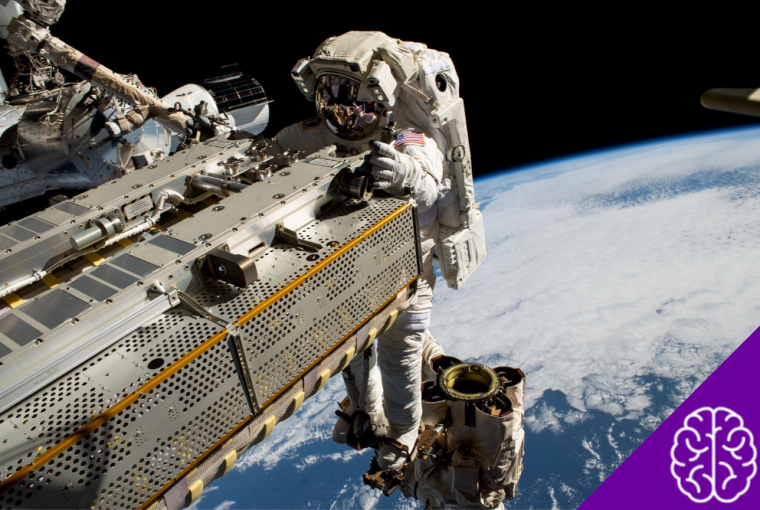When we think of space exploration, it’s easy to picture rockets, astronauts, and distant planets. But what may surprise you is how much space technology has shaped the way we live on Earth.
Over the decades, many tools and innovations originally developed for space missions have transformed into everyday technologies that we can no longer imagine living without. From precision navigation to energy-saving solutions, these advancements have woven themselves seamlessly into our lives.
This blog will explore some of the incredible technologies that have made the leap from space to Earth, showcasing how space exploration has truly revolutionized life on our planet. You’ll discover how inventions meant for the stars are now solving problems right here in your daily routine.
From Space to Your Pocket—The Power of GPS
Ever used your phone’s GPS to find a new restaurant or get directions on a road trip? You can thank space for that.
The Global Positioning System (GPS) was originally developed by the U.S. Department of Defense in the 1970s for military navigation. It relies on a network of satellites orbiting the Earth to provide accurate location and time data to users on the ground.
Fast forward to today, and you’re using GPS for far more than just finding your way. Industries like agriculture, shipping, and emergency services depend on GPS to improve efficiency and accuracy.
From enabling precision farming and reducing fuel waste to tracking lost phones, GPS is a perfect example of how a space innovation has woven itself into the fabric of our everyday lives.
Lighting the Way With LEDs
You likely encounter LED (Light-Emitting Diode) technology several times a day, whether it’s in your bedside lamp, your TV, or even your car headlights.
While LEDs might seem commonplace now, their roots extend all the way back to NASA’s efforts to develop efficient lighting for plant growth experiments aboard space missions.
NASA’s investment in LED technology paved the way for energy-efficient lighting that consumes less power and lasts significantly longer than traditional bulbs.
With their vibrant colors, low heat emissions, and durability, LEDs now illuminate everything from homes to streetlights and have even helped revolutionize the electronics industry.
The Universal Impact of Solar Panels
If you’ve seen solar panels on rooftops or in sprawling solar farms, you’ve probably witnessed another product of space exploration.
Solar cells were initially designed to power spacecraft, providing them with renewable energy in the harsh conditions of space.
Today, solar panels are not just a symbol of sustainability; they’re an essential part of the push toward green energy on Earth.
Homeowners and businesses adopt solar panels to reduce energy bills and minimize their carbon footprint. What started as a necessity for powering satellites has now become a critical tool in global efforts to combat climate change.
Memory Foam: From Spacecraft to Sweet Dreams
If you love your comfy memory foam mattress or pillow, you can thank NASA for the restful nights. Memory foam was originally developed in the 1960s to improve the cushioning and crash protection in spacecraft seats.
It molds to the shape of an object (or person) and gradually returns to its original form, making it a perfect material for absorbing shock.
Outside of space applications, memory foam has found its way into mattresses, pillows, medical products, and even footwear. Its ability to relieve pressure and provide superior comfort has made it an indispensable part of modern life.
Scratch-Resistant Lenses
Do you wear glasses or sunglasses? If so, you’ve likely benefited from scratch-resistant coatings for lenses.
This innovative technology was first developed by NASA to protect astronaut helmet visors from getting scratched by lunar dust particles during missions.
Today, that same technology is used to make eyeglasses, sunglasses, and camera lenses far more durable. It’s an everyday improvement born from the unique challenges of surviving the harsh lunar environment.
Water Purification Systems
Access to clean water is one of the most critical needs on Earth, and space exploration has played an important role in advancing water purification technologies. NASA developed advanced filtration systems to ensure astronauts had safe drinking water during missions.
These systems were adapted for broader use on Earth and are now implemented in disaster relief efforts, developing countries, and even portable water filters for outdoor adventurers.
The ability to turn contaminated water into clean, drinkable water is yet another example of space technology with life-changing impacts here at home.
Wireless Headsets
Hands-free communication is a part of modern life, whether you’re using Bluetooth to talk on the phone or giving a voice command to your smart speaker. But did you know the concept of wireless headsets was first developed for space missions?
NASA engineered these devices so astronauts could communicate with mission control without being tethered by wires while wearing bulky helmets. That pioneering work directly inspired the wireless communication devices we rely on for convenience and productivity.
Temperatures Under Control With Insulation
Ever heard of reflective insulation? This technology, initially developed for space exploration, is what keeps temperatures stable inside spacecraft. By reflecting heat away or trapping warmth, this insulation technology is capable of withstanding the extreme conditions of outer space.
Now, it’s widely used on Earth in everything from home insulation and survival blankets to refrigerated shipping containers. This innovation has significantly improved energy efficiency and temperature control in countless industries.
The Ripple Effect of Space Innovation
These examples barely scratch the surface of how space exploration continuously improves life here on Earth.
Technologies like infrared thermometers, satellite imaging for weather forecasting, and even prosthetic limbs have roots in space research and are revolutionizing industries far beyond what their inventors initially imagined.
By solving the unique challenges of space travel, we unknowingly solve some of Earth’s biggest problems too. Space might seem far away, but its influence is closer than you think.
Explore the Benefits of Space-Era Thinking!
Space technology teaches us an undeniable lesson about innovation—that solutions designed for one purpose can often find surprising new applications.
By investing in innovation and exploration, we create opportunities for advancements that will serve humanity in unimaginable ways.
Want to take inspiration from these revolutionary ideas and adopt cutting-edge technologies in your business or daily life? Keep exploring what the future holds and watch as the next wave of space-tech transforms our lives once again!


